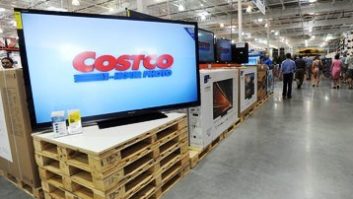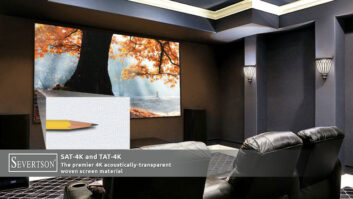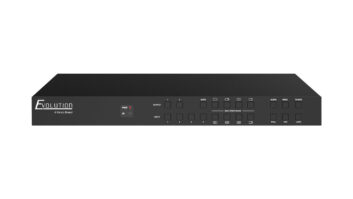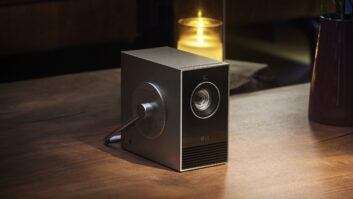The following discussion is an excerpt from TWICE’s annual Executive Retail Roundtable, held during CES 2016.
TWICE: Dave, you predicted last year that 4K TV would be the “King of the Holiday Season.” Did it live up to expectations?
David Workman, ProSource: It did not, I think, in total.
There was technology available with OLED that, had there been better supply, it would have probably carried an increase. Then again, if they had enough to supply everybody, would the demand have been as high for those who had it?
It was very much a situation of have-and-have-not, where you had those who could concentrate on a larger panel and higher-end technology. The unit velocity wasn’t there, but if you had the ability to take a consumer up into a larger panel, you might have done OK. It was kind of hit or miss. Clearly the overall unit velocity was not there, or at least not as much as everybody would have liked to have seen.
Stephen Baker, The NPD Group: Not to disagree with Dave, but we saw it a little bit differently. We tracked 4K TVs at 1.3 million units in the five holiday weeks. That was about 15 percent of all TVs. But if you looked at only 50-inch and above, 40 percent of the units and 60 percent of the dollars were in 4K.
Another thing that is interesting: Even before the holiday 4K was representing about 40 percent of 50- inch TVs. So even as we got into the promotional period — there was a little bit of a dip during Thanksgiving week — even with all of the promotions on cheaper stuff, the 4Ks still held their share at those levels compared to before the holiday season.
Workman: I was responding to the week-on-week — Week 49, Week 50 and Week 51. One week would be up, one week would be down, and the week before Christmas, Week 51 on your report, was down 35 percent.
Baker: It was huge.
Workman: The ups were not enough to offset the downs, and that trailed all the way back to the first of November. But the general business in television met expectations, and clearly there was more 4K.
We have to be careful because we have a notorious habit of replacing the same price point with a new technology. Just because we sold 4K, it doesn’t matter unless you are getting more money for it. If you take a $599 sale and pack more features and say, “Oh look, the success of 4K is here,” that is the bane of this industry. We just give more to the customer for the same dollar.
Say the baseline of the industry is at 34 million units. Take 7 million of those out for Black Friday and those couple of weeks where we just pump a bunch of units into the market, and we are back to about a 27-million-unit business, which is what the TV business was. All we have done is hyper-inflate the unit totals because of the crazy give-away stuff at $99.
Fred Towns, New Age Electronics: The other thing too is retail floor space. If you look at the TV departments and how they have changed over the last couple of years, they have downsized. What are you going to put up? You’re not going to put up obsolescence, you are going to put up the newer stuff, and that naturally forces a trend.
In my past with Panasonic, we saw this when plasma and high-definition came to market and how quickly they bastardized the existing technology. Now you are at a point where it is only 4K and everybody will be starting to put 8Ks on the wall after CES when they hear more about it. That trend has repeated itself throughout history with technology. Next year 8K will be the one that will get the premium, and 4K will be next year’s discount.
Ryan Ciovacco, Sears Holdings: It has a lot to do with the content too. Right now if people are at the five-year ownership point and in the market for a TV, they are buying 4K. It’s easy to pass the future-proof sale to them. The problem is that people at two years and three years are not saying they need a 4K right now because there is just not enough content for it. This year you will see a lot more content or streaming devices being able to pump out 4K. That will certainly help.
Workman: Content is the key. We have to give them a reason. They have told us that they want to migrate to a bigger screen if they are going to replace their set. We have to make sure they are willing to pay a little more for it somehow, some way, and not give it away.
Baker: Are you seeing any resistance at 65, 70 or 75 inches?
Workman: Seventy-five will be the new 65. If there was any inventory squeeze it was on the larger panel sizes. We have already heard that there are shortages in certain brands, if you want to get the 75 between now and model transition.
Neal Martinelli, merchandising VP, electronics/home solutions, HSN: We are seeing the same thing: 55 was [aspirational] for a long period of time, and 50 was the bread and butter. The customer is definitely stepping up to the 65 and beyond now.
David Pidgeon, Starpower: It’s not like the old days. When people come in, they want the experience and to feel good about what they are doing. During our big annual Expo event we showed the proper content and our 4K sales have been incredible.
As Dave said, I never thought that we would be at the 75 sales wise, but the manufacturers have helped that by lowering the price. People coming in are expecting to pay more than they are. It isn’t like somebody comes in and says, “Oh, you got that 65 at $1,499; I thought it would be $999.” It isn’t like that at all. It’s “I can’t believe it dropped that quickly.”
And I truly believe we dropped it quicker than we should. We got a little anxious to get the volume.
TWICE: So how do you get customers to forget those $899 holiday specials?
Pidgeon: When I looked at the figures and my inventory afterward, the things that were left over were things that I never thought would be. The hot buys on the 65, we had extra of those, and I was saying “Oh, we didn’t buy enough.” But I’m oversold on the 4K 65s and crazy scrambling trying to get those orders filled. It was a shift, and what we found out is people are willing to pay.
Workman: There’s a new ATSC standard coming out this year, ATSC 3.0, which will have 4K on the broadcast, and that is a second opportunity. It will be interesting to see if they have the ATSC 3.0 standard out in time for the Olympics to become a venue for pristine 4K broadcasts. That could be kind of fun.
TWICE: Amazon is also driving 4K adoption through your original content.
Laura Orvidas, Amazon: Yes, all movies and TV shows are in 4K Ultra HD. We started in December of 2014, and we have expanded our selection by more than 200 percent. There are hundreds of titles that are now available in 4K Ultra HD. We see that customers are watching more 4K — that has increased more than 10X — and there has been a more than 2,000 percent increase in 4K Ultra HD streams. With the proliferation of 4K TVs in the marketplace, consumers are definitely seeing that content.











